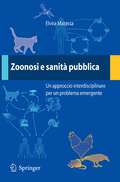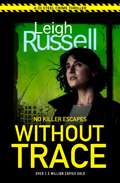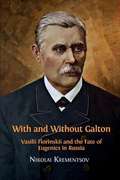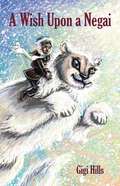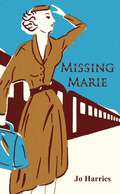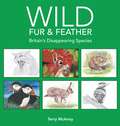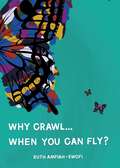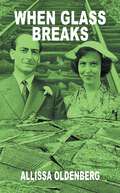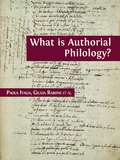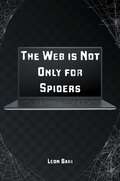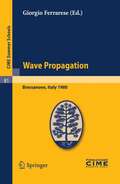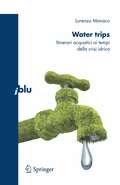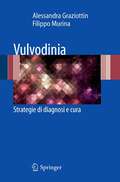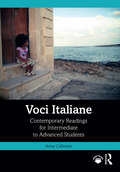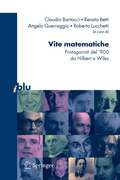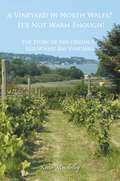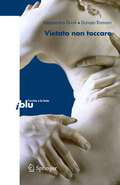- Table View
- List View
Zoonosi e sanità pubblica: Un approccio interdisciplinare per un problema emergente
by F. CanavesiLe zoonosi, cioè le infezioni naturalmente trasmissibili tra le altre specie animali e l'uomo, costituiscono oggi, anche nei paesi sviluppati, un problema emergente. Mutamenti climatici, flussi migratori umani, crescita degli scambi internazionali e guerre favoriscono sia il riemergere di malattie considerate rare, sia l'introduzione in nuove aree geografiche di organismi potenzialmente patogeni. Per buona parte di queste patologie, tuttavia, la maggioranza degli operatori sanitari - a cominciare dai medici di medicina generale - spesso non dispone di conoscenze e strumenti appropriati e aggiornati. Il testo si propone di fornire al personale medico - e in primo luogo ai medici di medicina generale - sia un quadro di riferimento scientifico e normativo, sia una serie di informazioni specifiche e pratiche sulle singole patologie. Questo volume vuole essere uno strumento operativo volto anche a favorire la collaborazione multidisciplinare e lo scambio di informazioni, in particolare tra medici e veterinari.
Zombies in Western Culture: A Twenty-first Century Crisis
by John Vervaeke Christopher Mastropietro Filip MiscevicWhy has the zombie become such a pervasive figure in twenty-first-century popular culture? John Vervaeke, Christopher Mastropietro and Filip Miscevic seek to answer this question by arguing that particular aspects of the zombie, common to a variety of media forms, a crisis in modern Western culture. The authors examine the essential features of the zombie, including mindlessness, ugliness and homelessness, and argue that these reflect the outlook of the contemporary West and its attendant zeitgeists of anxiety, alienation, disconnection and disenfranchisement. They trace the relationship between zombies and the theme of secular apocalypse, demonstrating that the zombie draws its power from being a perversion of the Christian mythos of death and resurrection. Symbolic of a lost Christian worldview, the zombie represents a world that can no longer explain itself, nor provide us with instructions for how to live within it. The concept of 'domicide' or the destruction of home is developed to describe the modern crisis of meaning that the zombie both represents and reflects. This is illustrated using case studies including the relocation of the Anishinaabe of the Grassy Narrows First Nation, and the upheaval of population displacement in the Hellenistic period. Finally, the authors invoke and reformulate symbols of the four horseman of the apocalypse as rhetorical analogues to frame those aspects of contemporary collapse that elucidate the horror of the zombie. Zombies in Western Culture: A Twenty-First Century Crisis is required reading for anyone interested in the phenomenon of zombies in contemporary culture. It will also be of interest to an interdisciplinary audience including students and scholars of culture studies, semiotics, philosophy, religious studies, eschatology, anthropology, Jungian studies, and sociology.
Woodstock Scholarship: An Interdisciplinary Annotated Bibliography
by Jeffrey N. GattenSince August 1969, the Woodstock Music and Art Fair looms large when recounting the history and impact of the baby boom generation and the societal upheavals of the Sixties. Scholars study the sociological, political, musical, and artistic impact of the event and use it as a cultural touchstone when exploring alternative perspectives or seeking clarity. This interdisciplinary annotated bibliography records the details of over 400 English-language resources on the Festival, including books, chapters, articles, websites, transcriptions and videos. Divided into six main subsections―Culture & Society, History, Biography, Music, Film, Arts & Literature―for ease of consultation Woodstock Scholarship sheds light on all facets of a key happening in our collective history. Throughout the 1960s, popular music became increasingly reflective and suggestive of the rising political and social consciousness of the youth culture. Examples can be seen in the development of the protest song genre within the folk music boom of the early Sixties and the marriage of lifestyle to music first reflected by The Beatles with fashion, followed by psychedelic music with the emerging drug culture. Woodstock was where these themes coalesced, thus becoming the defining and last great moment of the 1960s. However, Woodstock also represented an abundant amount of experiences and ideas and moments. Thus, when exploring the complicated accounts and numerous facets of America during the turbulent Sixties one discovers scholarship on the key subjects, such as the Vietnam War or the Civil Rights Movement, often considering and debating the importance, relevance, and epic nature of Woodstock. Multiple narratives emerge: a radical engagement of the hippie movement, an overt commercial exploitation of youth culture, a political statement. Woodstock scholarship does not stand alone as field of study, but it is at the cross-road of a number of disciplines―music history, cultural studies, sociology, arts and literature, media studies, politics and economics. Providing full bibliographical details and concise, informative annotation for each entry, Woodstock Scholarship is an essential tool for students, scholars, teachers, and librarians in all these areas, as well as for anyone seeking a deeper understanding of both the Woodstock Music and Art Fair phenomenon and of the confluence of music, commerce and politics.
Without Trace: An Utterly Gripping Detective Crime Thriller With An Unexpected Twist (Di Geraldine Steel Ser. #20)
by Leigh RussellWith and Without Galton: Vasilii Florinskii and the Fate of Eugenics in Russia
by Nikolai KrementsovIn 1865, British polymath Francis Galton published his initial thoughts about the scientific field that would become ‘eugenics.’ The same year, Russian physician Vasilii Florinskii addressed similar issues in a sizeable treatise, entitled Human Perfection and Degeneration. Initially unheralded, Florinskii’s book would go on to have a remarkable afterlife in twentieth- and twenty-first-century Russia. <p><p> In this lucid and insightful work, Nikolai Krementsov argues that the concept of eugenics brings together ideas, values, practices, and fears energised by a focus on the future. It has proven so seductive to different groups over time because it provides a way to grapple with fundamental existential questions of human nature and destiny. With and Without Galton develops this argument by tracing the life-story of Florinskii’s monograph from its uncelebrated arrival amid the Russian empire’s Great Reforms, to its reissue after the Bolshevik Revolution, its decline under Stalinism, and its subsequent resurgence: first, as a founding document of medical genetics, and most recently, as a manifesto for nationalists and racial purists. <p> Krementsov’s meticulously researched ‘biography of a book’ sheds light not only on the peculiar fate of eugenics in Russia, but also on its convoluted transnational history, elucidating the field’s protean nature and its continuing and contested appeal to diverse audiences, multiple local trajectories, and global trends. It is required reading for historians of eugenics, science, medicine, education, literature, and Russia, and it will also appeal to the general reader looking for a deeper understanding of this challenging subject.
With and Without Galton: Vasilii Florinskii And The Fate Of Eugenics In Russia
by Nikolai KrementsovIn 1865, British polymath Francis Galton published his initial thoughts about the scientific field that would become ‘eugenics.’ The same year, Russian physician Vasilii Florinskii addressed similar issues in a sizeable treatise, entitled Human Perfection and Degeneration. Initially unheralded, Florinskii’s book would go on to have a remarkable afterlife in twentieth- and twenty-first-century Russia. In this lucid and insightful work, Nikolai Krementsov argues that the concept of eugenics brings together ideas, values, practices, and fears energised by a focus on the future. It has proven so seductive to different groups over time because it provides a way to grapple with fundamental existential questions of human nature and destiny. With and Without Galton develops this argument by tracing the life-story of Florinskii’s monograph from its uncelebrated arrival amid the Russian empire’s Great Reforms, to its reissue after the Bolshevik Revolution, its decline under Stalinism, and its subsequent resurgence: first, as a founding document of medical genetics, and most recently, as a manifesto for nationalists and racial purists. Krementsov’s meticulously researched ‘biography of a book’ sheds light not only on the peculiar fate of eugenics in Russia, but also on its convoluted transnational history, elucidating the field’s protean nature and its continuing and contested appeal to diverse audiences, multiple local trajectories, and global trends. It is required reading for historians of eugenics, science, medicine, education, literature, and Russia, and it will also appeal to the general reader looking for a deeper understanding of this challenging subject. Victoria College, University of Toronto, has generously contributed to the publication of this volume.
William Moorcroft, Potter: Individuality by Design
by Jonathan MallinsonWilliam Moorcroft (1872-1945) was one of the most celebrated potters of the early twentieth century. His career extended from the Arts and Crafts movement of the late Victorian age to the Austerity aesthetics of the Second World War. Rejecting mass production and patronised by Royalty, Moorcroft’s work was a synthesis of studio and factory, art and industry. He considered it his vocation to create an everyday art, both functional and decorative, affordable by more than a privileged few: ‘If only the people in the world would concentrate upon making all things beautiful, and if all people concentrated on developing the arts of Peace, what a world it might be,’ he wrote in a letter to his daughter in 1930.
William Moorcroft, Potter: Individuality by Design
by Jonathan MallinsonWilliam Moorcroft (1872-1945) was one of the most celebrated potters of the early twentieth century. His career extended from the Arts and Crafts movement of the late Victorian age to the Austerity aesthetics of the Second World War. Rejecting mass production and patronised by Royalty, Moorcroft’s work was a synthesis of studio and factory, art and industry. He considered it his vocation to create an everyday art, both functional and decorative, affordable by more than a privileged few: ‘If only the people in the world would concentrate upon making all things beautiful, and if all people concentrated on developing the arts of Peace, what a world it might be,’ he wrote in a letter to his daughter in 1930.
What is Authorial Philology?
by Paola Italia;Giulia Raboni et al.A stark departure from traditional philology, What is Authorial Philology? is the first comprehensive treatment of authorial philology as a discipline in its own right. It provides readers with an excellent introduction to the theory and practice of editing ‘authorial texts’ alongside an exploration of authorial philology in its cultural and conceptual architecture. The originality and distinction of this work lies in its clear systematization of a discipline whose autonomous status has only recently been recognised (at least in Italy), though its roots may extend back as far as Giorgio Pasquali. This pioneering volume offers both a methodical set of instructions on how to read critical editions, and a wide range of practical examples, expanding upon the conceptual and methodological apparatus laid out in the first two chapters. By presenting a thorough account of the historical and theoretical framework through which authorial philology developed, Paola Italia and Giulia Raboni successfully reconceptualize the authorial text as an ever-changing organism, subject to alteration and modification. What is Authorial Philology? will be of great didactic value to students and researchers alike, providing readers with a fuller understanding of the rationale behind different editing practices, and addressing both traditional and newer methods such as the use of the digital medium and its implications. Spanning the whole Italian tradition from Petrarch to Carlo Emilio Gadda, this ground-breaking volume provokes us to consider important questions concerning a text’s dynamism, the extent to which an author is ‘agentive’, and, most crucially, about the very nature of what we read.
Wave Propagation: Lectures given at a Summer School of the Centro Internazionale Matematico Estivo (C.I.M.E.) held in Bressanone (Bolzano), Italy, June 8-17, 1980 (C.I.M.E. Summer Schools #81)
by Giorgio FerrareseLectures: A. Jeffrey: Lectures on nonlinear wave propagation.- Y. Choquet-Bruhat: Ondes asymptotiques.- G. Boillat: Urti.- Seminars: D. Graffi: Sulla teoria dell’ottica non-lineare.- G. Grioli: Sulla propagazione del calore nei mezzi continui.- T. Manacorda: Onde nei solidi con vincoli interni.- T. Ruggeri: "Entropy principle" and main field for a non linear covariant system.- B. Straughan: Singular surfaces in dipolar materials and possible consequences for continuum mechanics
Water trips: Itinerari acquatici ai tempi della crisi idrica (I blu)
by Monaco LorenzoIl volume vuole fare luce sullo stato dell'acqua in Italia, modello di quanto sta succedendo nel pianeta. Il nostro infatti è il un paese strano: pur essendo ricchissimo di acqua, potrebbe raggiungere il collasso idrico nel 2015. Perché i fiumi e i laghi si prosciugano? Per lo stesso motivo per cui le città si inondano: qualcuno ha toccato le nostre riserve idriche, gli equilibri si sono scomposti e la scienza sta cercando di ricomporre il mosaico. Il libro, tramite dati e storie, spiega alcuni dei meccanismi che hanno rovinato gli equilibri delle acque dolci e propone ai lettori dei consigli di viaggio, nella convinzione che tutti debbano esplorare la propria acqua. La crisi idrica, infatti, è un problema globale che però può essere risolto solo a livello locale, con la conoscenza ed il rispetto degli ecosistemi acquatici.
Vulvodinia: Strategie di diagnosi e cura
by Alessandra Graziottin Filippo MurinaIl dolore cronico vulvare, o “vulvodinia”, è una patologia diffusa che può avere un forte impatto sul benessere della donna. Nonostante sia frequentemente osservata nella pratica clinica quotidiana, resta un disturbo trascurato e può richiedere anche molti anni per essere correttamentediagnosticato. Il volume offre un panorama conciso delle ultimissime acquisizioni sulla diagnosi e la cura della vulvodinia e delle sue numerose comorbilità, ha un formato facile da leggere, con molti consigli pratici, e aiuta ad affrontare rapidamente ed efficacemente tutte le complesse e delicate problematicheche sottendono il disturbo. Questo libro si rivolge ai medici motivati a migliorare la qualità di vita delle donne che soffrono di vulvodinia, e in particolare ai Ginecologi e ai Medici di Medicina Generale.
The Voice of the Century
by Massimo ZicariThis innovative work considers the notion of bel canto and the manner in which this vibrant tradition lives in the records of Luisa Tetrazzini (1871-1940), one of the most celebrated sopranos ever.
The Voice of the Century
by Massimo ZicariThis innovative work considers the notion of bel canto and the manner in which this vibrant tradition lives in the records of Luisa Tetrazzini (1871-1940), one of the most celebrated sopranos ever.
Voci Italiane: Contemporary Readings for Intermediate to Advanced Students
by Anna CellineseVoci Italiane: Contemporary Readings for Intermediate to Advanced Students presents intermediate to advanced students of Italian with a series of calibrated and thought-provoking readings from both contemporary Italian fiction and non-fiction. Voci Italiane exposes learners to the authentic language of 21st-century authors whose voices and work reflect and form part of the diverse sociocultural fabric of today’s Italy. The readings expose learners to authentic materials that provoke a reflection on intercultural competence, diversity, and social justice issues and are accompanied by exercises and writing activities. The contemporary and engaging topics covered include gender and race, multiculturalism and plurilingualism, disability, political upheaval, and alternative forms of authorship in art such as graffiti, street art, and underground rap. This book is ideal for intermediate and advanced learners of Italian as a foreign language seeking to expand on their knowledge and understanding of lexical and grammatical structures in Italian, with a focus on 21st-century Italy. It is suitable for use as a primary text for both class-based and independent study.
Voci Italiane: Contemporary Readings for Intermediate to Advanced Students
by Anna CellineseVoci Italiane: Contemporary Readings for Intermediate to Advanced Students presents intermediate to advanced students of Italian with a series of calibrated and thought-provoking readings from both contemporary Italian fiction and non-fiction. Voci Italiane exposes learners to the authentic language of 21st-century authors whose voices and work reflect and form part of the diverse sociocultural fabric of today’s Italy. The readings expose learners to authentic materials that provoke a reflection on intercultural competence, diversity, and social justice issues and are accompanied by exercises and writing activities. The contemporary and engaging topics covered include gender and race, multiculturalism and plurilingualism, disability, political upheaval, and alternative forms of authorship in art such as graffiti, street art, and underground rap. This book is ideal for intermediate and advanced learners of Italian as a foreign language seeking to expand on their knowledge and understanding of lexical and grammatical structures in Italian, with a focus on 21st-century Italy. It is suitable for use as a primary text for both class-based and independent study.
Vite matematiche: Protagonisti del '900, da Hilbert a Wiles (I blu)
by C. Bartocci R. Betti A. Guerraggio R. LucchettiLo scibile matematico si espande a un ritmo vertiginoso. Nel corso degli ultimi cinquant'anni sono stati dimostrati più teoremi che nei precedenti millenni della storia umana. Per illustrare la ricchezza della matematica del Novecento, il presente volume porta sulla ribalta alcuni dei protagonisti di questa straordinaria impresa intellettuale, che ha messo a nostra disposizione nuovi e potenti strumenti per indagare la realtà che ci circonda. Presentando matematici famosi accanto ad altri meno noti al grande pubblico – da Hilbert a Gödel, da Turing a Nash, da De Giorgi a Wiles – i ritratti raccolti in questo volume ci presentano personaggi dal forte carisma personale, dai vasti interessi culturali, appassionati nel difendere l’importanza delle proprie ricerche, sensibili alla bellezza, attenti ai problemi sociali e politici del loro tempo. Ne risulta un affresco che documenta la centralità della matematica nella cultura, non solo scientifica ma anche filosofica, artistica e letteraria, del nostro tempo, in un continuo gioco di scambi e di rimandi, di corrispondenze e di suggestioni.
Vietato non toccare (I blu)
by Alessandra Drioli Donato RamaniGrazie a uno stile di scrittura agile e veloce, a una ricca serie di esempi - con la descrizione di opere d'arte e performance sempre sorprendenti, bizzarre, vigorose – e a un ricco apparato iconografico questo libro vuole essere un primo e inedito tentativo di creare un ideale filo di congiunzione, ove possibile, tra esperienze diverse dell'arte nei science centre. Convinti che partendo dalla storia dei science centre da un lato e delle ricerca artistica contemporanea dall'altro per arrivare all'esperienze di ieri e di oggi, dentro e fuori l'Europa, individuando caratteristiche, peculiarità, differenze, questo libro potrà diventare un testo base, un primo esercizio per descrivere una realtà in continua espansione, dominato da una straordinaria e vitalissima entropia.
